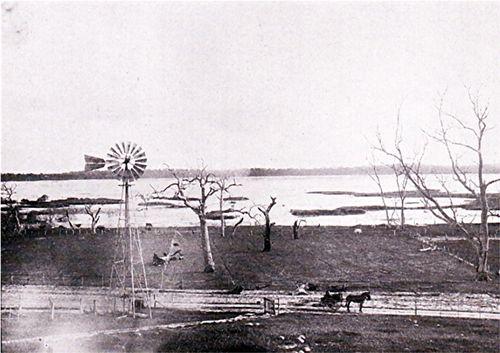|
Herdsman Lake is an important wildlife refuge close to Perth city and is part of only 20% of remaining wetlands in the Perth coastal area.
Over 100 bird species use the lake including red-necked stints, coots, ibises and wood sandpipers. Some of the migratory species fly in from places as far away as Siberia and Norway.
Reptiles are also common in the park including the highly venomous tiger snake and signs warn visitors to keep an eye out and stay clear if they spot one.
The Aboriginal name for the area is Ngurgenboro and was originally called Great Lake by early settlers. It was given its current name in 1836.
In 1854 Benedictine monks were given land grants around the lake where they planted orchards and vineyards. They called the area New Subiaco which gave rise to
the current name of the suburb of Subiaco. The area remained important for food production and in 1900 the Catholic church took over ownership.
In 1920 the Soldier's Settlement Scheme purchased some of the land and the size of the lake was reduced as land was reclaimed. The area was subject to flooding
so drains were constructed from Osborne Park with an outflow from the lake being built all the way to the sea.
Flooding was still a problem and the settlement scheme failed. In 1928 another attempt was made to sell land around the lake but again it failed due to the wet nature of the area.
Cattle grazing and market gardening continued into the 1930s and in 1936 there was a proposal to build an airport on the site. This was not followed up and in 1970 there was
even a proposal to use the site as a rubbish dump. Thankfully there was a public outcry and by 1976 there were moves to retain the lake and open up nearby areas for commercial purposes.
In 1988 all publicly owned land at the lake was declared an A-Class reserve. It took until 1997 for the lake to be declared a regional park.
Larger mammals vanished from the park in the 1960s, the last kangaroo was seen there in 1953. Large scale insect spraying up to 1986 caused major problems in the park and the
eco-system was badly degraded. The introduced bullrush, which dominates the lake shore, has become an important shelter for birds but also poses a fire hazard during the summer
months.
There are picnic areas, playgrounds and walks in the park including the Olive Seymour Boardwalk. A settler's cottage from the Soldier Settlement Scheme has been restored and a
wildlife centre gives visitors all sorts of information on the lake and its inhabitants.

Herdsman Lake in 1920
NPW Website for more information
Best time to visit:
|
Jan
|
Feb
|
Mar
|
Apr
|
May
|
Jun
|
Jul
|
Aug
|
Sep
|
Oct
|
Nov
|
Dec
|
|







